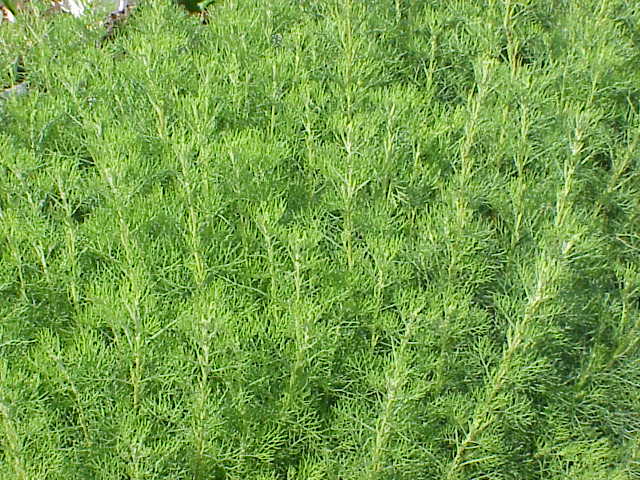COMPOSITION OF THE ESSENTIAL OIL OF ARTEMISIA SUBVISCOSA TURCZ. EX BESS
UDC 547.913
Abstract
Artemisia subviscosa Turcz. Ex Bess. is an endemic species of the Baikal region. It grow on the territory of the Barguzinsky region of the Republic of Buryatia. Raw materials for the study were collected during the expedition work in 2016. By the method of hydrodistillation the essential oils from the aerial parts and individual organs (inflorescences, leaves, stems) of the A. subviscosa was extract. The greatest yield of essential oil is registered in flowers (0.7%). The composition was determined by chromatography-mass spectrometry on an Agilent Packard HP 6890 gas chromatograph with a quadrupole mass spectrometer (HP MSD 5973N) as a detector. More than 70 components have been identified and it has been established that the composition of essential oils is represented by mono- and sesquiterpene compounds, the first predominantly accumulate in the inflorescences, the others – in leaves and stems and the aerial parts. The dominant components are santolina triene (2.9–33.1%), germacrene D (2.1–8.8%), β-selinene (6.4–9.3%), α-selinene (6.4–8.6%), α-bulnesene (1.9–2.7%), δ-cadinene (1.7–2.4%), caryophyllene oxide (2.1–9.9%), caryophyllene (11.6–17.5%), γ-muurolene (1.4–4.0%), aciphyllene (2.8–3.2%) , acyphyllic acid (4.5–10.5%), spathulenol (0.8–3.7%).
Downloads
Metrics
References
Leonov T.G. Flora yevropeyskoy chasti SSSR. [Flora of the European part of the USSR]. St. Petersburg, 1994, vol. VII, pp. 150–161. (in Russ.).
Namzalov B.B. Opredelitel' rasteniy Buryatii. [Key to plants of Buryatia]. Ulan-Ude, 2001, pp. 531–540. (in Russ.).
Krasnoborov I.M. Flora Sibiri. [Flora of Siberia]. Novosibirsk, 1997, vol. 13, 472 p. (in Russ.).
Polyakov P.P. Flora SSSR. [Flora of the USSR]. Moscow, Leningrad, 1961, vol. 26, 630 p. (in Russ.).
Bodoyev N.V., Bazarova S.V., Namzalov B.B. Khimiya rastitel'nogo syr'ya, 2002, no. 1, pp. 81–84. (in Russ.).
Zhigzhitzhapova S.V., Randalova T.E., Radnayeva L.D. Byulleten' VSNTS SO RAN, 2015, no. 2(102), pp. 133–135. (in Russ.).
Amel'chenko V.P. Novosti sistematiki vysshikh rasteniy. [News systematics of higher plants]. Leningrad, 1976, vol. 13, pp. 234–244. (in Russ.).
Khanina M.A., Khanina M.G. Polyni Sibiri Dal'nego Vostoka (khimicheskiy sostav, sistematika, biologicheskaya ak-tivnost'). [Wormwood Siberia of the Far East (chemical composition, systematics, biological activity)]. Orekhovo-Zuyevo, 2018, 246 p. (in Russ.).
Kupriyanov A.N. Botanicheskiye issledovaniya Sibiri i Kazakhstana: Sbornik nauchnykh statey Gerbariya Altayskogo universiteta. [Botanical studies of Siberia and Kazakhstan: Collection of scientific articles of the Herbarium of Altai University]. Barnaul, 1995, pp. 4–10. (in Russ.).
Kupriyanov A.N. Botanicheskiy zhurnal, 1995, vol. 80, no. 7, pp. 82–84. (in Russ.).
Atazhanova G.A., Dembitskii A.D., Zhizhin N.I., Adekenov S.M. Chemistry of Natural Compounds, 1999, vol. 35, no. 2, pp. 172–175, DOI: 10.1007/BF02234927.
Randalova T.E., Sakenova P.Y., Atazhanova G.A., Zhigzhitzhapova S.V., Radnaeva L.D., Adekenov S.M. Czech Chemical Society Symposium Series. Karaganda, 2015, pp. 169–173.
Budantsev A.L. Rastitel'nyye resursy Rossii: Dikorastushchiye tsvetkovyye rasteniya, ikh komponentnyy sostav i bi-ologicheskaya aktivnost'. Semeystvo Asteraceae (Compositae). Chast' 1. Rody Achillea – Doronicum. [Plant resources of Russia: Wild flowering plants, their component composition and biological activity. Family Asteraceae (Compositae). Part 1. The birth of Achillea – Doronicum]. St. Petersburg, Moscow, 2012, vol. 5, 317 p. (in Russ.).
Vichkanova S.A., Adgina V.V., Izosimova S.B. Fitontsidy. [Volatile]. Kiev, 1972, pp. 162–168. (in Russ.).
Rotmistrov M.I. Fitontsidy v meditsine, sel'skom khozyaystve i pishchevoy promyshlennosti. [Volatile in medicine, agriculture and food industry]. Kiev, 1960, pp. 68–70. (in Russ.).
Utkina T.M., Potekhina L.P., Kartashova O.L. Sibirskiy meditsinskiy zhurnal, 2014, pp. 93–96. (in Russ.).
Kartashova O.L., Tkachev A.V., Utkina T.M., Potekhina L.P. Byulleten' Orenburgskogo nauchnogo tsentra UrO RAN, 2012, no. 3, pp. 2–10. (in Russ.).
Mikhaylova T.N., Berezovskaya T.P., Usynina R.V., Danilevich L.S. Nekotoryye voprosy farmakognozii dikorastushchikh i kul'tiviruyemykh rasteniy Sibiri. [Some issues of pharmacognosy of wild and cultivated plants of Siberia]. Tomsk, 1969, pp. 32–39. (in Russ.).
Gosudarstvennaya farmakopeya Rossiyskoy Federatsii. 13-ye izd. [The State Pharmacopoeia of the Russian Federation. 13th ed.]. Moscow, 2015, vol. 3, URL: http://pharmacopoeia.ru/gosudarstvennaya-farmakopeya-xiii-online-gf-13online. (in Russ.).
Tkachev A.V. Issledovaniye letuchikh veshchestv rasteniy. [Study of plant volatiles]. Novosibirsk, 2008, 969 p. (in Russ.).
Atazhanova G.A. Terpenoidy efirnykh masel rasteniy. Rasprostraneniye, khimicheskaya modifikatsiya i biologi-cheskaya aktivnost'. [Terpenoids of essential oils of plants. Distribution, chemical modification and biological activity]. Moscow, 2008, 286 p. (in Russ.).

Copyright (c) 2019 Khimiia rastitel'nogo syr'ia (Chemistry of plant raw material)

This work is licensed under a Creative Commons Attribution 4.0 International License.

This work is licensed under a Creative Commons Attribution 4.0 International License.
The authors, which are published in this journal, agree to the following conditions:
1. Authors retain the copyright to the work and transfer to the journal the right of the first publication along with the work, at the same time licensing it under the terms of the Creative Commons Attribution License, which allows others to distribute this work with the obligatory indication of the authorship of this work and a link to the original publication in this journal .
2. The authors retain the right to enter into separate, additional contractual agreements for the non-exclusive distribution of the version of the work published by this journal (for example, to place it in the university depository or to publish it in a book), with reference to the original publication in this journal.
3. Authors are allowed to post their work on the Internet (for example, in a university repository or on their personal website) before and during the review process of this journal, as this may lead to a productive discussion, as well as more links to this published work.











